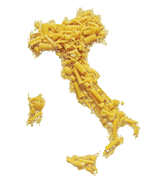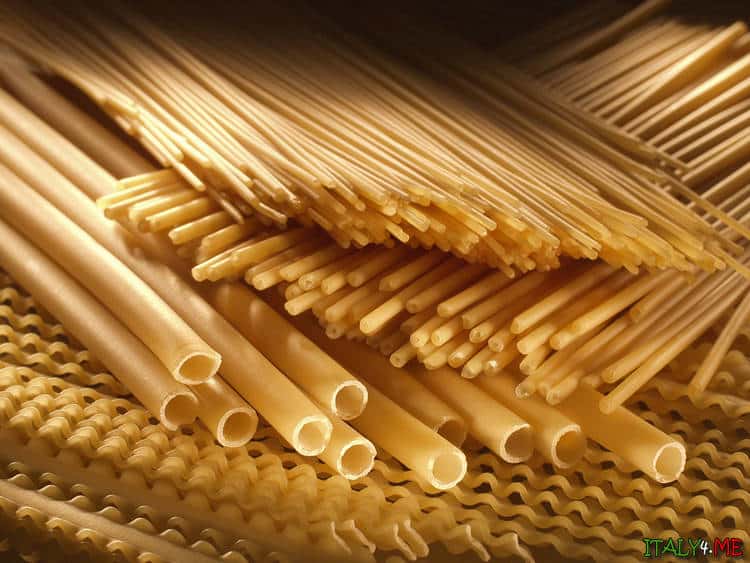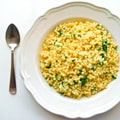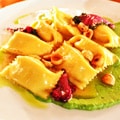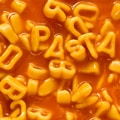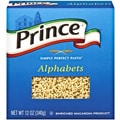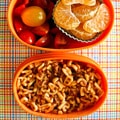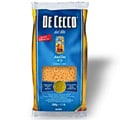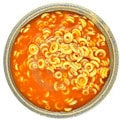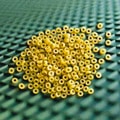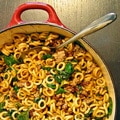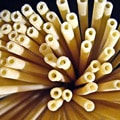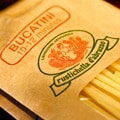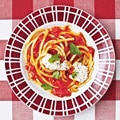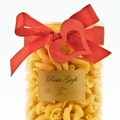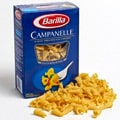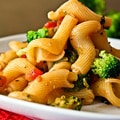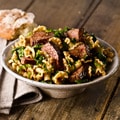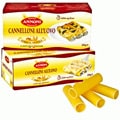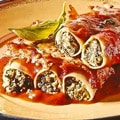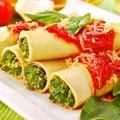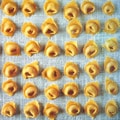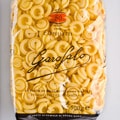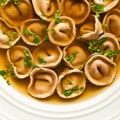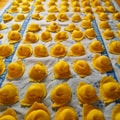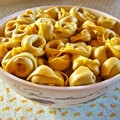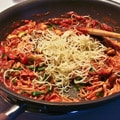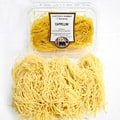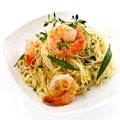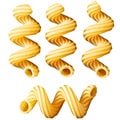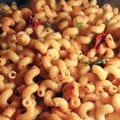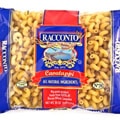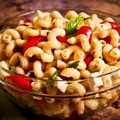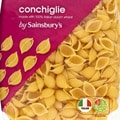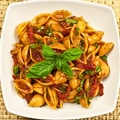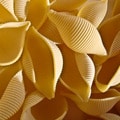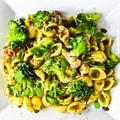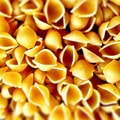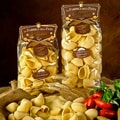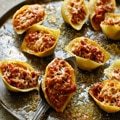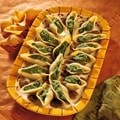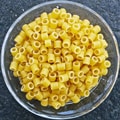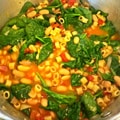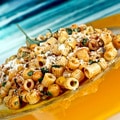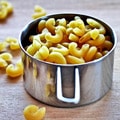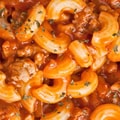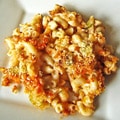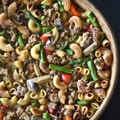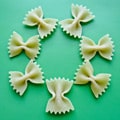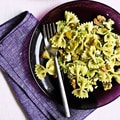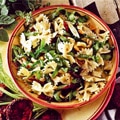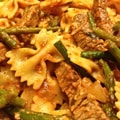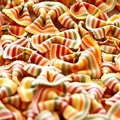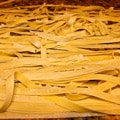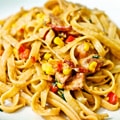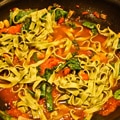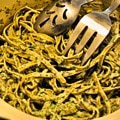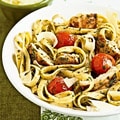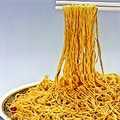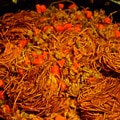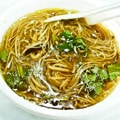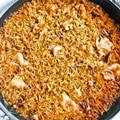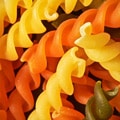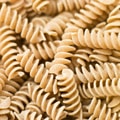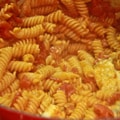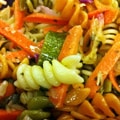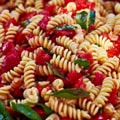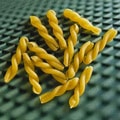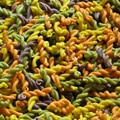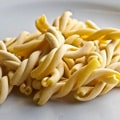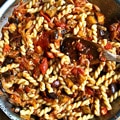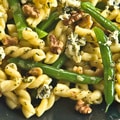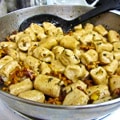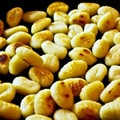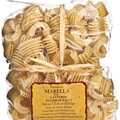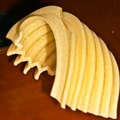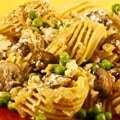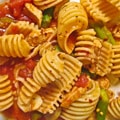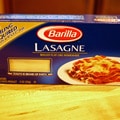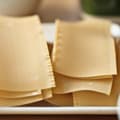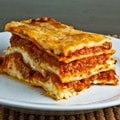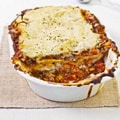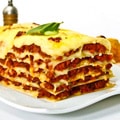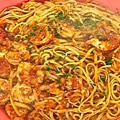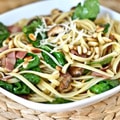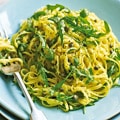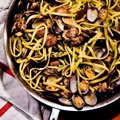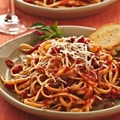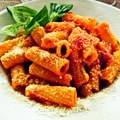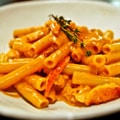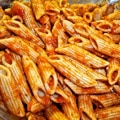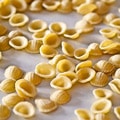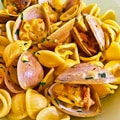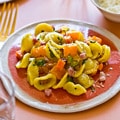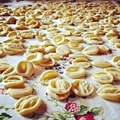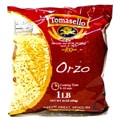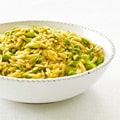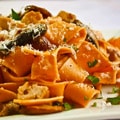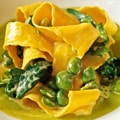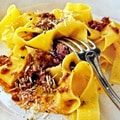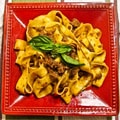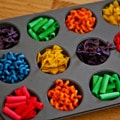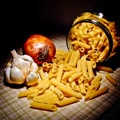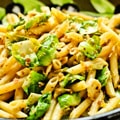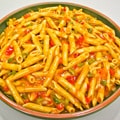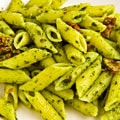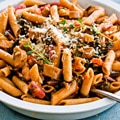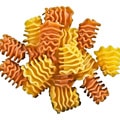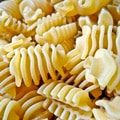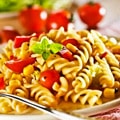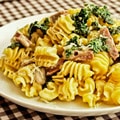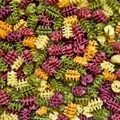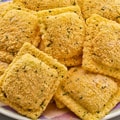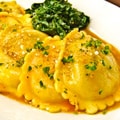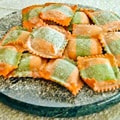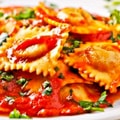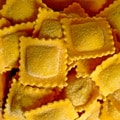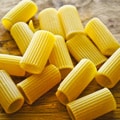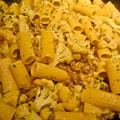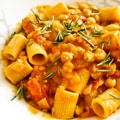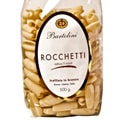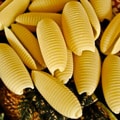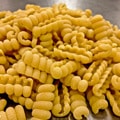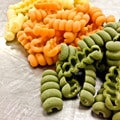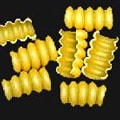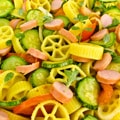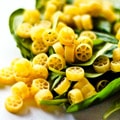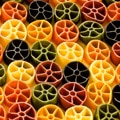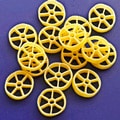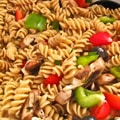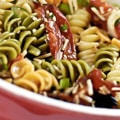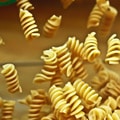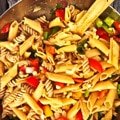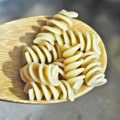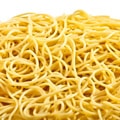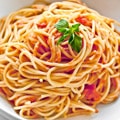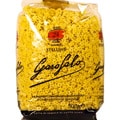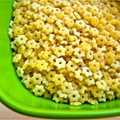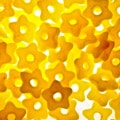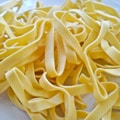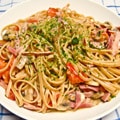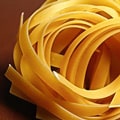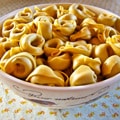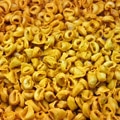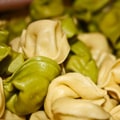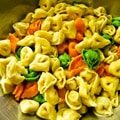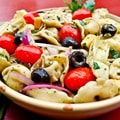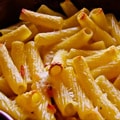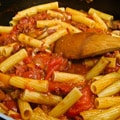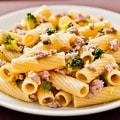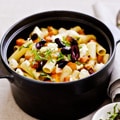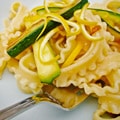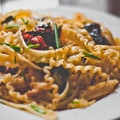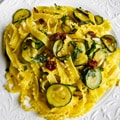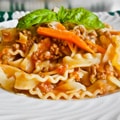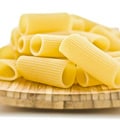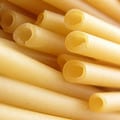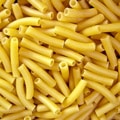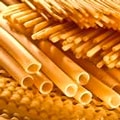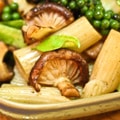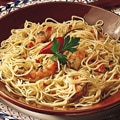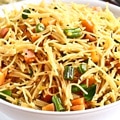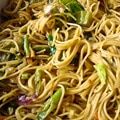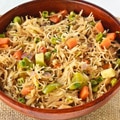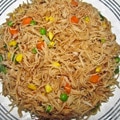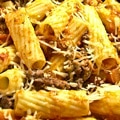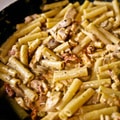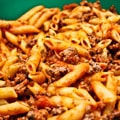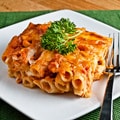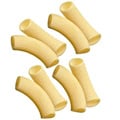More often than not, when one thinks of Italian cuisine, pizza instantly springs to mind. Following closely behind in popularity is pasta. Let’s take a closer look at this incredibly popular dish. The history of pasta is far more ancient than that of pizza or tomato sauce, both of which are integral parts of traditional Italian cuisine.
Page Contents
The History of Pasta
According to one legend, pasta was brought to Europe by Venetian merchant Marco Polo from his travels in China, but historians refute this claim.
Researchers believe that the history of pasta dates back to the Neolithic era. This was when people learned to grow cereals and later to grind these grains into flour. The emergence of pasta was simply a matter of time. The earliest pasta was nothing more than flour mixed with water and dried in the sun. Naturally, it looked quite different from what we know today.
Historical excavations have confirmed that around the first century AD, a type of wide noodle was being made from hard wheat varieties, referred to as lagane. This is where the modern word “lasagna” comes from. At that time, this noodle wasn’t boiled, but was instead baked in ovens. This practice continued for centuries.
Around the eighth century, during their invasion of Europe, the Arabs had a significant influence on Italian cuisine. Dried noodles, brought by them to Sicily, became the main precursor to pasta. The original dish contained a lot of Eastern spices. Perhaps this is why the tradition still exists in Sicily to add cinnamon, raisins, and other spices to pasta dough.
This new product was so well-suited to Italy’s climate that it quickly spread from the island to the mainland.
The Evolution of Pasta Preparation
The word pasta, translated from ancient Greek, means “flour mixed with sauce”. It started being used as a dish name around the beginning of the 14th century.
By this time, the dish had spread throughout the peninsula. By the 15th century, dried pasta products had become even more popular due to their long shelf life. For the same reason, pasta became a favorite dish of travelers and sailors. New geographical discoveries helped it spread around the world.
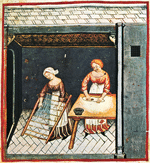
If at the start of the pasta’s evolution, dough was kneaded by foot, by the 19th century, much had changed. To increase production volumes and reduce labor costs, Italian engineer Cesare Spadaccini invented a mechanical machine that mimicked the movement of feet. It was a real breakthrough in the history of pasta products. Mass production became more convenient and hygienic.
The first recipes for pasta prepared by our ancestors differed significantly from modern ones. Even after pasta started being boiled instead of baked, it was boiled in milk and dressed with butter, sugar, and cheese.
Sometimes broth was used instead of milk. Only in the early 19th century did a culinary revolution separate sweet dishes from salty ones, helping pasta meet sauces.
Despite tomatoes reaching Europe soon after the discovery of America, a lot of time passed before they were used as food. After all, tomatoes belong to the nightshade family. The fact that nightshades are poisonous was widely believed until the mid-19th century.
It was during this time that a cook risked adding tomatoes to pasta. After that, the use of tomatoes in cooking became widespread, and the combination of pasta and tomato sauce became classic.
The Very First Pasta Recipe
The author of the first documented pasta recipe was Martino Corno. He was a true master of his kitchen and worked for a highly respected patriarch of the Catholic Church. The book, in which the unique recipe was published over a thousand years ago, was called “The Art of Cooking Sicilian Pasta and Vermicelli”. According to the medieval recipe, pasta was to be cooked in almond milk and dressed with sweet roots.
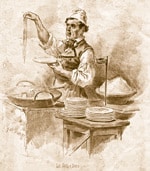
Currently, the Italian industry produces pasta both in dry (secca) and fresh (fresco) forms. One of the issues has been the ability to fully meet both local and global demand. Despite its ubiquity and mass production, the Italian product is still made preserving centuries-old traditions, which guarantee its superior quality.
Dry Pasta
Dry pasta refers to noodles that have been dried for long-term storage.
Classic Italian pasta is made exclusively from durum wheat and water.
The major pasta manufacturers strictly adhere to this golden rule. However, dry pasta made from softer varieties with the addition of eggs is also quite common. The secret components that give Italian pasta its unique taste are the process of extrusion and the method of drying.
Any Italian pasta, especially more complex shapes, is ideal for capturing and holding sauces on its surface.
Almost all tubular products for this purpose have ridges on the surface. These are created during the extrusion of the dough through a nozzle. After extrusion and cutting, the pasta is dried at a certain temperature.
In this aspect, the classic Italian drying method surpasses mass production in the resulting taste qualities. Industrial drying takes place at very high temperatures to reduce manufacturing time. In the traditional method, drying is done at a lower temperature but can last up to 50 hours. The finished pasta is then packaged in brand packaging.
Fresh Pasta
Indeed, all pasta is born fresh, and only a small part of the produced product goes straight to the kitchen. Fresh pasta must be used on the day it is made to maintain its flavor qualities. Preparing fresh product requires more attention than dried, but it is also considered a matter of special pride. In reality, dry pasta is no worse than fresh. They are simply used in different situations.
Choosing the Right Italian Pasta
Whether you prefer fresh or dry pasta, you should look for well-reputed brands when selecting it. They are known for using the best quality ingredients.
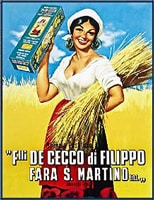
Remember, buying cheap mass-produced pasta can easily deprive you of a tasty lunch or dinner. Quality matters when it comes to pasta, and it’s usually worth paying a bit more for a product that will offer better taste and texture.
Names, Forms and Types of Italian Pasta
There are over 350 types of pasta available in the market today. Their astonishing variety can range from classic tubes to tennis rackets. Nearly any significant event in the world can inspire pasta manufacturers to create a new shape. For instance, there is pasta in the shapes of car brands, alphabet letters, and even the Eiffel Tower. Let’s look at some of these pasta shapes in more detail:
Acini di pepe or “pepper seeds”.
As you can tell from the name, this is a very tiny type of pasta. It is mainly used in salads or soups.
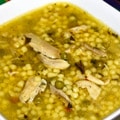
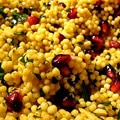
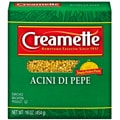
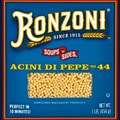
Agnolotti.
This is a small, stuffed pasta. Small pieces of dough can be filled with spinach, cheese, or meat. It resembles dumplings in appearance and is always served with a sauce.

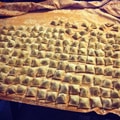
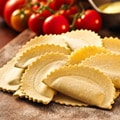
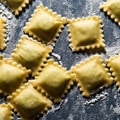
Alphabet.
As the name suggests, these are small pasta letters. They are especially popular among children as they make mealtime much more interesting.
Anellini.
This is a small, ring-shaped pasta. It is used as an addition to salads and soups.
Bucatini.
In Italian, “bucato” means “holey.” This is a long pasta that externally resembles a straw. The ideal sauce for bucatini is amatriciana with cheek lard and tomatoes. However, it is equally delicious with other sauces.
Campanelle or gigli – “little bells” or “lilies”.
This short, floral pasta resembles small bells or lilies. It is served with thick cheese or meat sauces and can be used in salads and soups.
Cannelloni.
This pasta looks like large tubes. It is intended for stuffing with meat or cheese and baking with sauce. After preparation, they resemble stuffed pancakes.
Cappelletti.
This is a small pasta, most often stuffed, but it can also be plain. In appearance, they resemble little hats or small dumplings. They are served with either broth, sauce, or simply with cheese.
Capellini.
This is a long and very, very thin (about 1 mm) pasta. In Italian, “capellino” means “little hair.” There is even thinner pasta called capelli d’angelo, which means “angel hair.” These noodles are traditionally served with light, delicate sauces.
Cavatappi – “corkscrew”.
This fun pasta shape looks like a corkscrew. It pairs well with simple sauces. Thanks to its shape, it also finds its application in salads.
Conchiglie – “seashell”.
A familiar name, isn’t it? However, the taste of authentic Italian conchiglie is quite different from ordinary pasta, and you are sure to notice. Thanks to their shape, they are excellent for holding any sauces.
Conchiglioni – “big seashells”.
Just like regular conchiglie but much larger, they are used for stuffing and baking under a sauce.
Ditalini – “thimble”.
This small pasta resembles very short tubes. They are used in thick soups and stews with vegetables.
Elbow macaroni.
This pasta shape resembles small hollow tubes that are slightly curved. They are traditionally used to make macaroni and cheese. They can also be used for casseroles and salads.
Farfalle – “butterflies”.
This pasta shape, which also resembles bows, appeared around the 16th century. At that time, they were handmade by squeezing the middle of each dough rectangle. Farfalle is served with bright tomato sauces and vegetables.
Fettuccine – “ribbons”.
This pasta, also known as noodles, consists of long, thin strips about 1 cm wide. Fettuccine is prepared in the same way as linguine. The ribbons are served with tomato or fish sauces.
Fideo.
This pasta shape resembles thin, slightly curved strands. They can be used in soups, salads, and main dishes.
Fusilli.
Also known as fusillini, this pasta shape consists of 4 cm long spirals. Larger, more curved spirals are called rotini. The bends in the spirals hold sauce excellently. They are best served with pesto sauce.
Gemelli – “twins”.
This pasta shape looks like two twin strands twisted together. It pairs well with meat and fish sauces, as well as creamy and vegetable sauces.
Gnocchi – “little dumplings”.
Gnocchi is made from dough with semolina, spinach, potato, or cheese. It is served with tomato sauce and grated cheese.
Lanterne.
Small pieces of this ribbed pasta, curved at the edges, pair perfectly with the thickest sauces.
Lasagne.
This is a wide, flat, and long pasta. The thin plates can be of different sizes and feature either straight or wavy edges. Lasagna is intended for baking in a form, similar to a cake, where it serves the role of the sponge. Instead of cream, it’s layered with various fillings (meat, cheese, vegetables, seafood) and sauces (béchamel, Bolognese). It’s considered one of the most popular types of pasta in Italy.
Linguine – “little tongues”.
This pasta shape closely resembles thick spaghetti but is longer and flatter. It’s served with tomato or fish sauces.
Maccheroni.
This pasta is probably the very first representative of the macaroni family in many countries. It’s this pasta that gave its name to the entire class of macaroni products. The hollow interiors of macaroni allow light sauces to penetrate inside, making them juicy.
Orecchiette – “little ears”.
This small, round pasta, not more than 2 cm in diameter, resembles cute little ears. It’s added to soups and salads or prepared as a standalone dish.
Orzo.
This unusual pasta shape and size resembles ordinary rice. It’s most commonly added to salads and soups.
Pappardelle.
This is a very wide and long pasta, reminiscent of fettuccine. It’s served with thick sauces or as a baked dish.
Pasta colorata – colored pasta.
Almost any pasta can be colored. Only natural ingredients are used for coloring, such as spinach for green, tomatoes for red, pumpkin and carrot for orange, and beetroot for pink. The resulting color doesn’t affect the method of cooking the pasta.
Penne.
This pasta is in the form of tubes with slanted edges, externally resembling feathers for writing. After all, “penna” translates from Italian as “feather”. The length of this pasta doesn’t exceed 4 cm, and the width is around 1 cm. Penne is served with thick hot sauces. Very similar to penne, but longer and wider, are manicotti, which are used stuffed with various fillings and baked in a form.
Radiatori – radiators.
A corrugated pasta with deep grooves. It pairs well with creamy sauces and can be used in baked dishes and salads.
Ravioli.
This pasta resembles dumplings, only square. The main difference is not in the form but in the filling, which can be meat, fish, cheese, or even chocolate. Ravioli is boiled to readiness and served with simple sauces that don’t overpower the flavor of the original filling. It can also be used for baking.
Rigatoni.
This pasta is in the form of short tubes with a ridged surface. Thanks to the wide opening, it holds sauce on the surface well. Apart from being served as a standalone dish, it can be used in salads and baked dishes.
Rocchetti – spool.
A short, unusual pasta, used in ragù, salads, or as a standalone dish.
Rotelle – wheels.
Round pasta in the shape of little wheels with spokes. It pairs excellently with thick sauces, holding them inside.
Rotini – spirals.
Pasta in the shape of small short springs. Earlier, such pasta was made by winding strips of dough around a spoke. It’s served with meat and vegetable fillings.
Spaghetti – little ropes
The most common type of pasta. If it’s thicker, it’s called spaghettoni, and if thinner – spaghettini. It’s especially delicious with tomato sauces, but the cooking and serving options are countless.
Stelline.
The smallest pasta in the shape of a pentagonal star with a hole in the center. It’s usually used in salads and soups.
Tagliatelle – egg noodles.
A long and flat pasta, similar to fettuccine, but narrower. It holds sauces well due to its porous structure. It pairs well with mascarpone, Bolognese, or spicy fish sauces.
Tortellini.
Round pasta in the shape of rings with a filling. The filling can be cheese or vegetable. Apart from the classic serving with sauces, it can be drizzled with olive oil and sprinkled with pepper, garlic, and Parmesan. Tortellini can also be served in broth.
Tortiglioni.
Short pasta in the form of medium-sized tubes. It’s served with simple sauces.
Tripoline.
Small pasta in the shape of a bow tie. It’s used in salads, soups, or served separately with simple sauces.
Tubini.
Pasta in the form of simple medium-sized tubes. It’s distinguished by the ability to be cooked quickly by frying.
Vermicelli.
In translation from Italian, “Vermicelli” means “little worms”. It looks like classic spaghetti, but it’s thinner and shorter. It’s served with light sauces.
Ziti.
Pasta in the form of short tubes, bent in an arc. It’s similar to elbow macaroni, but it’s longer and wider. It’s used in baked dishes and salads with thick sauces.
How to Cook Italian Pasta?
Even the highest quality pasta needs to be cooked correctly. The most popular method of preparing pasta worldwide is boiling it to an “al dente” state, which means “to the tooth”. In this case, the very middle of the pasta retains a slight firmness.

Another cooking secret is to never rinse the pasta after boiling. This simple procedure can kill the taste of even the best pasta.
So, the main steps to prepare pasta correctly are:
- Fill a pot with water, calculating one liter for every 100 grams of dry product, and bring it to a boil.
- Add salt to the boiling water, calculating one tablespoon per liter of water.
- Put the dry pasta into the boiling water and stir well to prevent it from sticking to the bottom and clumping together.
- One minute before the end of the total cooking time, take out a piece and check it for readiness.
- Fresh pasta is cooked until ready in 3-5 minutes, and dry pasta made from durum wheat is cooked for six to fifteen minutes depending on thickness.
- If you can see a thin white dot or line in the middle of a broken piece of pasta, it means it has been cooked to an al dente state.
- The cooked pasta should be quickly drained in a colander, sauce added, and served.
Traditional Seasonings for Italian Pasta
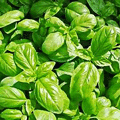
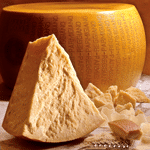
Now, we’d like to share one of the classic Italian pasta recipes for you to enjoy.
Roman Bucatini (Recipe serves 6)
To prepare this dish, you will need the following ingredients:
- Spaghetti pasta: 600g
- Ripe tomatoes: 800g
- Mozzarella cheese: 200g
- Red onion: 2 pcs
- Green olives: 3 tablespoons
- Capers: 2 tablespoons
- Fresh thyme leaves: 10-12 pcs
- Chopped parsley: 2 tablespoons
- Garlic: 2 cloves
- Olive oil: 90g
- Parmesan cheese: to taste
- Salt and pepper
Begin by thinly slicing the mozzarella and onions. Coarsely chop the olives. Peel the tomatoes, remove their seeds, and blend them with the thyme leaves. Peel and crush the garlic with the flat side of a knife. In a separate bowl, combine the prepared vegetables and cheese. Season this mixture with salt and pepper, dress with olive oil, and stir. Your sauce is now ready.
In the meantime, properly cook your pasta. Once it’s done, drain it and add it to the prepared sauce. Gently stir it, then serve it immediately. For those who wish, the completed dish can be further enhanced with grated Parmesan cheese.
Enjoy your meal!
As a final note, we would like to share a few interesting facts about pasta.
Pasta for Mood Enhancement
Serotonin, also known as the “happiness hormone,” is a neurotransmitter responsible for our well-being and stress management. Its concentration in the body is directly influenced by tryptophan. Tryptophan is an amino acid that cannot be produced by the body on its own and must be obtained from food.
To increase serotonin levels, it’s essential to increase the intake of foods containing tryptophan. Such foods include asparagus and other legumes, sunflower seeds, pineapple, bananas, spinach, turkey, and – drumroll, please – pasta. Consequently, by consuming pasta (preferably made from durum wheat), we can improve our mood and manage stress more effectively.
Nutritional Value of Pasta

Pasta Museum in Parma
Located at Strada Giarola, 11 in Parma, Italy, you’ll find the world’s only pasta museum. The halls of this national museum house original machines used in pasta production. Photographs depicting the pasta-making process, from wheat cultivation to the final product, adorn the walls. In a dedicated room, specially invited guests can attend seminars on the art of pasta production and usage, for instance in dietetics. Additionally, the museum hosts a library of invaluable culinary recipes.
For more information, visit the official website of the pasta museum: pasta.museidelcibo.it.
 Italy for me From Italy with love
Italy for me From Italy with love


